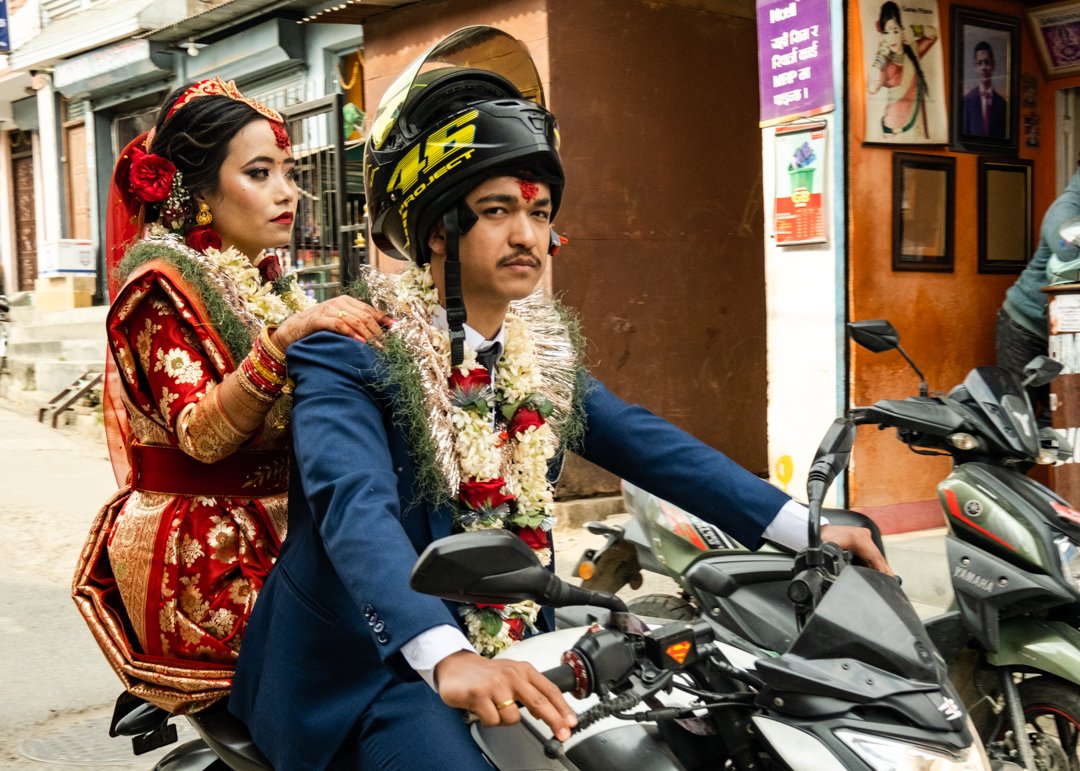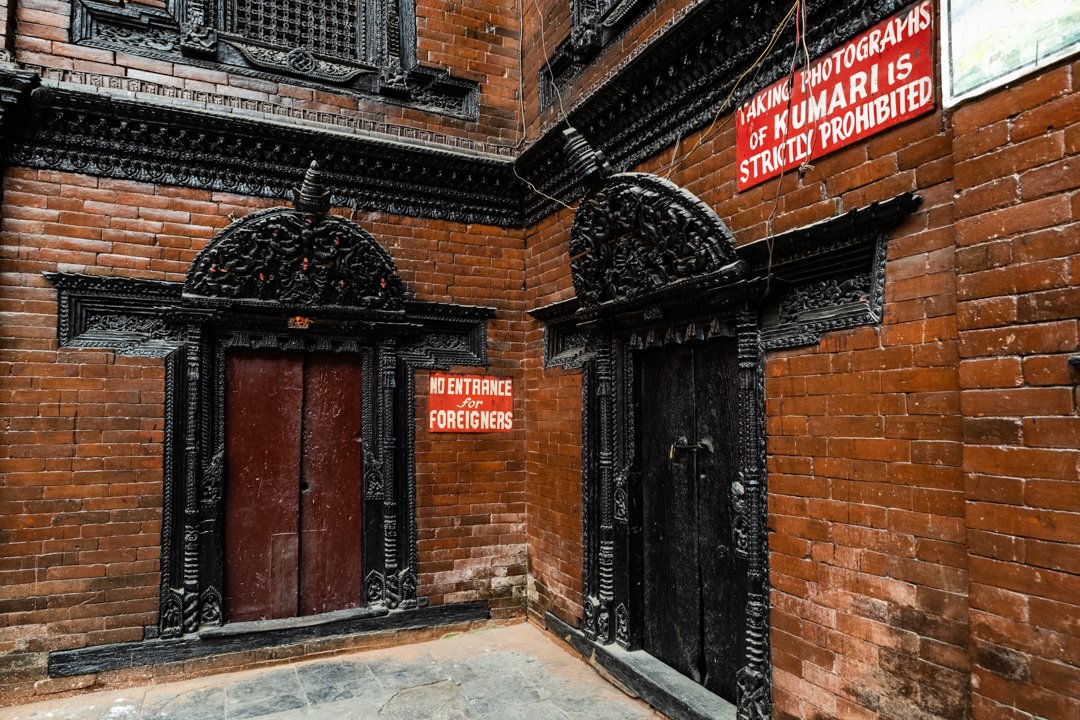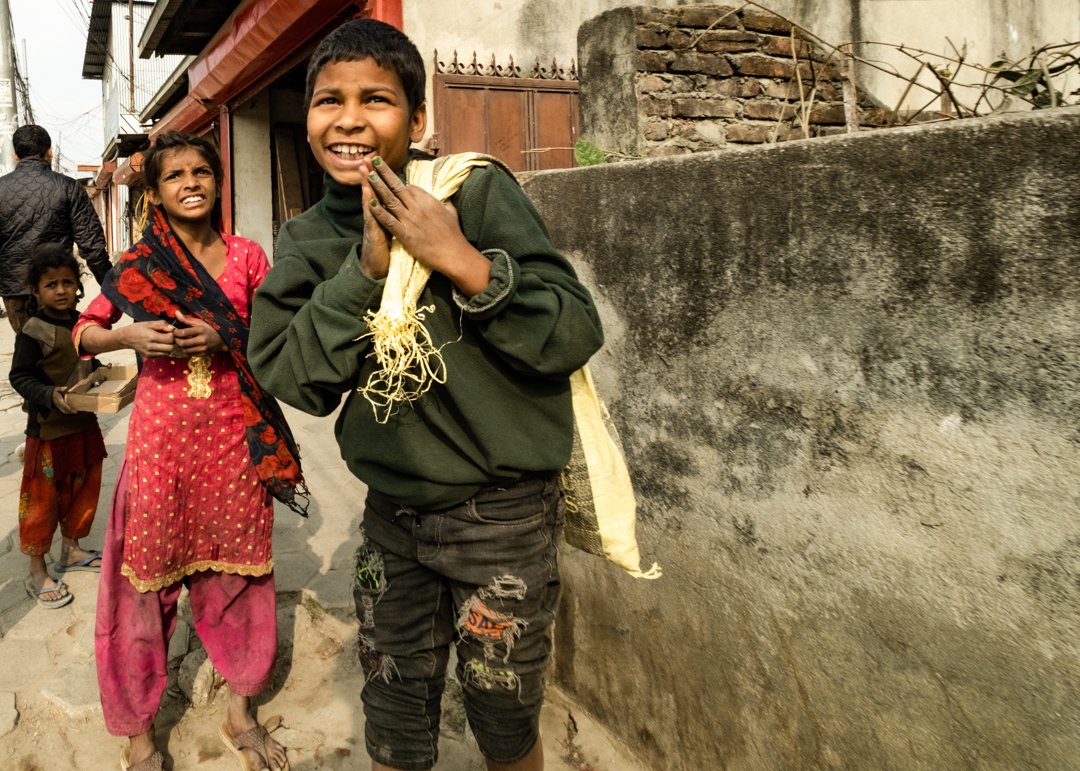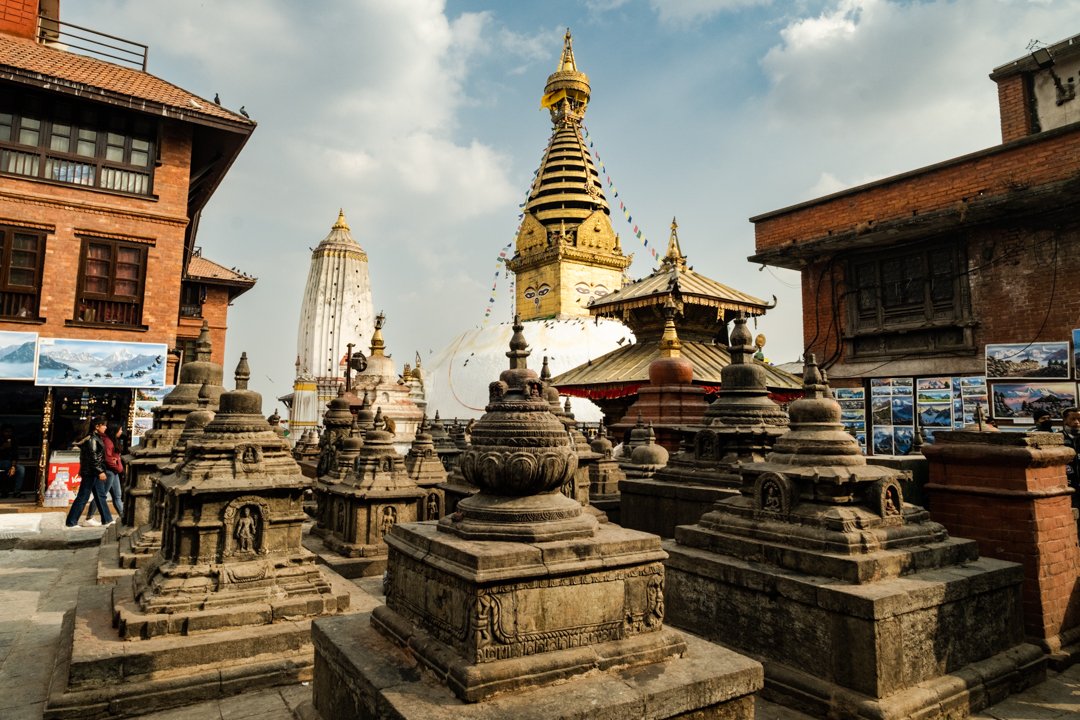We travelled by bus through the most atrocious weather, over to the eastside of S. Korea to Gangneung, a coastal city with the ‘scent of pine and coffee permeating throughout’.
Read Morestreet photography
New Lane Towards Peace - Slogan, Civilian Access Control Line. DMZ
The Demilitarised Zone (DMZ) is a 4km wide strip of land that runs across the Korean Peninsula to act as a buffer between North and South Korea.
Read MoreSoft and Weak Like Water - Art Exhibition Poster, Seoul.
Seoul is an undulating, sprawling metropolis filled with industry and urbanisation overshadowing the pockets of the old traditional life.
Read MoreA Ride To Your Dream - Viking 22 bus slogan. Nagarkot
The Himalaya mountain range runs across Nepal’s northern and western parts, and eight of the world’s ten highest mountains, including the highest, Mount Everest, are within its territory. How could we miss that!
Our taxi driver, Raju, took us up Up UP the mountain. How we managed to go up is beyond me. The road was seldomly there. Raju told us there was a better road but not to go up, up, up, only for down, down, down. We were to experience that later.
It was a rattling ride up to our destination, 2000m up in the air. When we arrived our feet didn’t feel like they were touching the ground. The town was pretty bereft of anything or anyone. The hotels looked deserted.
Town of Nagarkot
We knew from the start that we would not be seeing the mountains in all their glory as it was the wrong time of year. That didn’t stop us getting our 6.00 AM sunrise knock on the door curtesy of the very keen hotel-staff. The peaks we did see poking above the clouds were amazing - they are way, way bigger than anything I’ve ever skied down. We felt like we were on top of the world. We were more than happy to chill out here in the beautiful garden, watching the eagles and stare with wonder at the mountain peaks.
After acclimatising for a day we headed out on an adventure. A 3 hour hike - on a tarmac road curtesy of the military, rewarded us with even more breathtaking views, accompanied by music and chanting filling the valley below us. It was very moving.
En-route to our destination, an observation tower an extra 200m, we heard music nearby. A bus was parked on a bit of wasteland, an oven was being set up, food unpacked and a loud speaker turned up to max - A women’s community picnic had just rocked up.
In Nepal, communities can pay into a fund that assists people, similar to how our building societies originally worked. This fund also funded days out for its members and today was picnic day.
Before we could even introduce ourselves I was whisked off to the dance floor, the cook grabbed my phone and while he waited for the dhal to heat through he videoed my poor attempts at dancing with a very lovely group of ladies.
Nagarkot rocks.
The journey down on the better road was vastly steeper, unfortunately once the military area ended so did the road. It was a white knuckle ride and Raju certainly entertained us as he expertly navigated the rubble, holes and rocks.
Before we arrived back in Kathmandu, Raju insisted we tried some King Kurd - his favourite snack. A sweet yoghurt made from Buffalo Milk and served in disposable terracotta pots. Good call!
Farewell Nargakot, it was an unexpected delight.
One day left in Kathmandu, then back to India for the final part of our journey.
Sweat is Just Fat Crying - Epic Fitness Advert. Thamel. Kathmandu
The biggest surprise was to find the population of Nepal was over 80% Hindu and not predominantly Bhuddist as I first thought. The second surprise was the quietness. This is a relatively new phenomenon. Three years ago honking the horn was banned - unless you can validate its use. The traffic police have come down hard on the road traffic causing recent protests from the taxi drivers. I have to say after India, I’m enjoying not having my ears assaulted.
We are staying in the Thamel neighborhood of Kathmandu, a very popular backpackers area. Wires are strung up all over the city, but are slowly being tidied up. Kathmandu used to practice “load sharing,” so during the day there were scheduled power cuts to help conserve energy, this has nearly all been eradicated in the major cities but you still get caught out with power cuts.
The area is just one big souvenir, trekking and pashmina shop. Cheap imitations getting caked in dust. If the pashminas were real they wouldn’t be hanging on the dusty roadside. The contents of the shops are predominately out on the street, the shopkeepers hidden inside in the dim light.
Kathmandu is very, very dusty due to brick factories, building works and unfinished roads being churned up by rickshaws, motorbikes and cars. The air is constantly filled with a haze of dust that makes the air have a golden glow.
On the face of it I wouldn’t say Kathmandu is a particularly attractive city or very photogenic. However, look beyond the main shopping thoroughfare and the tourists and it’s another story - we found interesting dark narrow alleys, buildings shored up, courtyards and a calmer view of everydaylife.
We made our way to Durbar Square as suggested by the manager of our hotel in order to witness a phenomen we would never have experienced before.
How could we say no!
With only seconds to spare we made it to an inner courtyard just as the doors were shutting. About 20 of us were locked in. There was a strange air of expectation. We were told to put our phones and cameras away, quite a few times and a few times more. Photography was not allowed under any circumstances.
We were about to witness the presence of a living Goddess - the Kumari. A living reincarnation.
An old woman appears at the window to scan the group for any photography equipment and then…. a gasp from the crowd and she appeared. A young girl, a very young girl, always chosen from a clan of the Newari community to be a living Goddess.
The bejewelled Royal Kumari stared down at us. No flicker of emotion, just stared.
Officials were touching their foreheads, praying or just gasping in awe. She will carry out this role - appearing at the window each day- until she reaches menstruation age then she will no longer be a goddess and will be integrated back into society.
Throughout her Goddess life she has to pass ritual tests and be inspected for 32 specific attributes of physical beauty, including a neck like a conch shell, eyelashes like a cow, a chest like a lion, and thighs like a deer. Her eyes and hair must be black. And she must be brave.
‘The-would-be Kumaris are kept in a dark room with slaughtered buffalo heads while men dance around to monitor their levels of “fearlessness,” says a former Kumari, Rashmila Shakya in her autobiography, From Goddess to Mortal. She found the transition from being living goddess to just another girl was emotionally challenging.
Apparently Kamari tradition is frowned upon by child protection groups.
Once the Goddess had gone back inside we were allowed to take photographs then the doors were unlocked and we were set free. Well the hotel manager was right, we have never experienced anything like that before!
There are a number of beggars, but, although not rich, people do give to the most needy.
We climbed up 180 steps to the Swayambhunath temple, also known as the Monkey Temple. Swayambhunath sits high on a hill overlooking the Kathmandu Valley, it was relatively quiet and peaceful here, and the temple is beautiful.
While the 2015 earthquake was devastating, it didn’t change the heart of the city. Much of the city escaped the damage too, while the ancient parts that were hit still live on with all the character of Kathmandu. It’s not a place you can really compare to any other. While it does possess a chaos somewhat similar to India, everything else about Kathmandu is too different to really compare.
We really liked it here because of the the people. The Nepali people are very welcoming, polite, and friendly and they went out of their way to make our visit very enjoyable. It is often said that people first come to Nepal for the mountains, but return for the people.
That will most likely be true in our case!
In the meantime it’s time to pack our bags and head up the mountain.
Small or medium you are always ‘XL’ for us. - Federal Bank Advert. Jaipur
One misty morning we headed 10 kilometres out of Jaipur’s city centre to find the Monkey Temple.
We were greeted by goats, cows and of course monkeys - in abundance.
As soon as we pitched up 2 young brothers introduced themselves and offered to be our guides and protect us from the monkeys - all for the equivalence of a pound. How could we refuse?
Rishi and Naran were good guides, they loved the monkeys and helped us avoid the Babas’ who try to rip you off. Rishi was especially good with the monkeys and wanted to be a vet, but I guess life won’t give him that chance. He told us about all the animals and birds we saw and showed us videos of leopards which they had seen on the path we walked. Thankfully we did not meet them. There is known to be 46 leopards living in the locality, they come into the temple area to hunt the dogs and monkeys.
As we climbed up we passed lots of the local children kite-flying into the mist.
There are many temples within this mountainous site and a natural spring that flows down from the hilltop. The water from the spring fills up many water tanks which are considered very sacred and the pilgrims visiting the temple bathe in the holy water.
A newly married couple were on their way to the temple to be be blessed.
The boys were clever and tricked us into buying them dinner, but for 20p we thought it was funny. Telling us we had to pay the Baba a small fee for the temple, which transpired was a small bowl of Dahl for them each.
The boys were actually working for a gang who were operating as you went in through the gate. However, they were so charming and this is all their life is right now, we were more than happy to pay them well and enjoyed their lovely company and everything they taught us. At the ages of 14 and 12 life has forced them to grow up too early.
The monkey’s cheeks are rammed with the peanuts we fed him.
So now it’s time to bid farewell to Jaipur and all its wildlife. We throughly enjoyed our time here.
A Helping Hand and a Little More Anger - Road sign. Jaipur
Block printing Day!! I’ve been looking forward to this for simply ages. We spent the day at Creatis - an arts centre that creates all types of upmarket patterned material - embroidered, block printed, screen printed and eco-dyed. The environment is a lovely, healthy, relaxed environment to work in.
Harshvardhan and Kunj - the Master - looked after us and taught us the process involved in block printing. We chose our beautiful handmade wood blocks to print a test piece and then a final larger piece. We pinned out the material on the padded cloth tables and started printing. It’s not as easy as it may appear.
John’s base print and border
Adding the third block to my piece.
Working my across the big piece of material with the fourth block.
Still got two more blocks to go.
I found it very meditative. You have to give the blocks a hefty thump which was also quite satisfying. At the very end we finished with bruised hands, a huge sense of achievement and happy smiles. We were presented with our test pieces which had secretly been sewn into a bag for us - it was a wonderful experience.
John’s final piece.
My final piece.
We had seen some wooden blocks been hand carved in town the previous day. The carvers are the unsung and unseen heroes. To get a set of blocks to match so perfectly is no mean feat as well as carving out all the intricate details.
Woodblock carver’s tools.
We enjoyed our time at Creatis very much. The boss recommended a restaurant hidden in the old city which turned out to be fantastic. A very good day all round.
Our walk back after a dinner and the pink streets were almost deserted, except for the cows and a few late night workers.
Love My Grandmother - Tuk Tuk Advert. New Delhi.
The train trip from Delhi to Jaipur was like watching an 8 hour movie. What an insight into life on the tracks. Life here is so difficult. The problems are so big it’s difficult to see how to solve them. Even a simple question like where do you put your rubbish? is a huge problem when you have 1.4 billion people.
Following the track-towns there were hundreds of miles of flat, yellow fields all producing vegetable oil.
These are a some vignettes I took en-route.
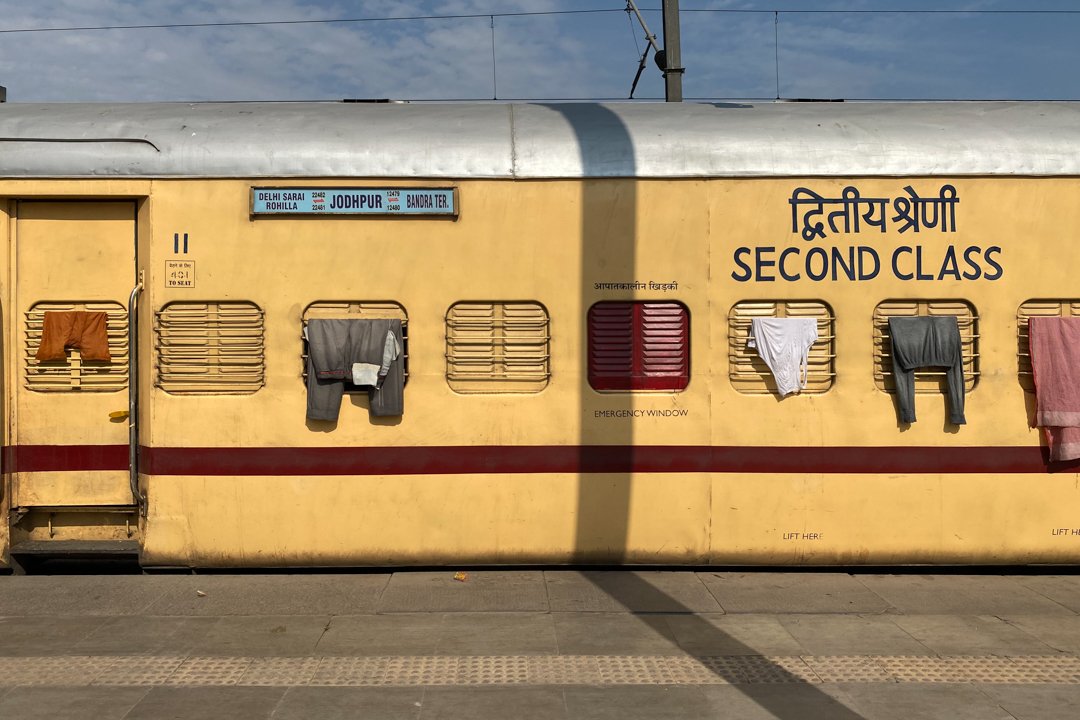
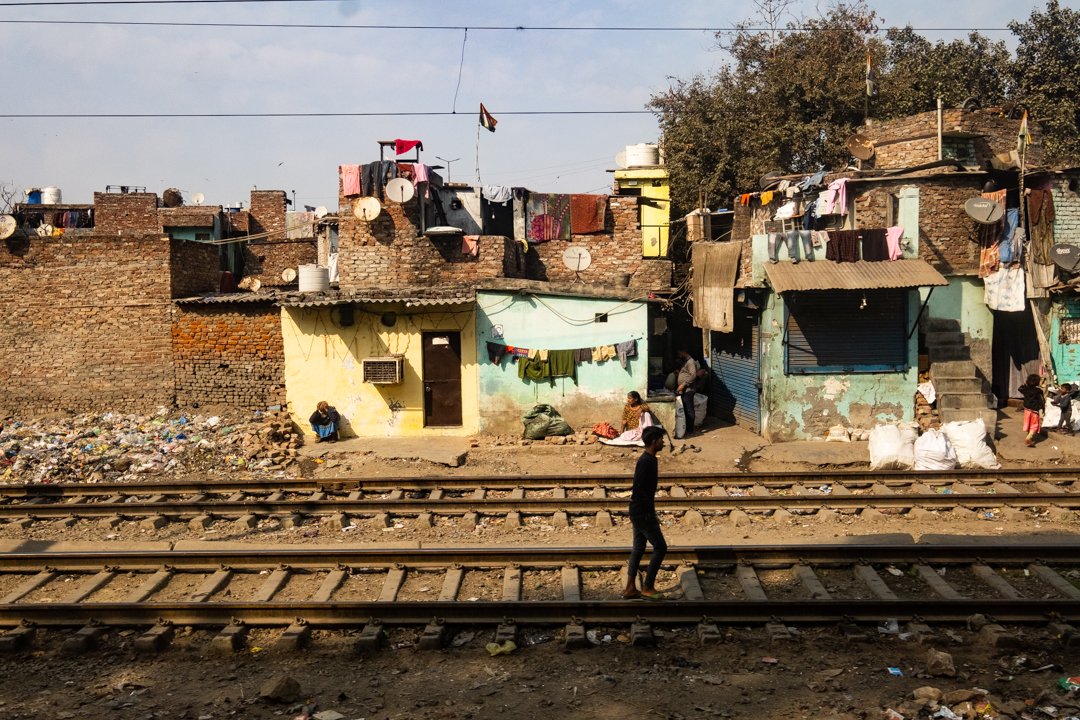
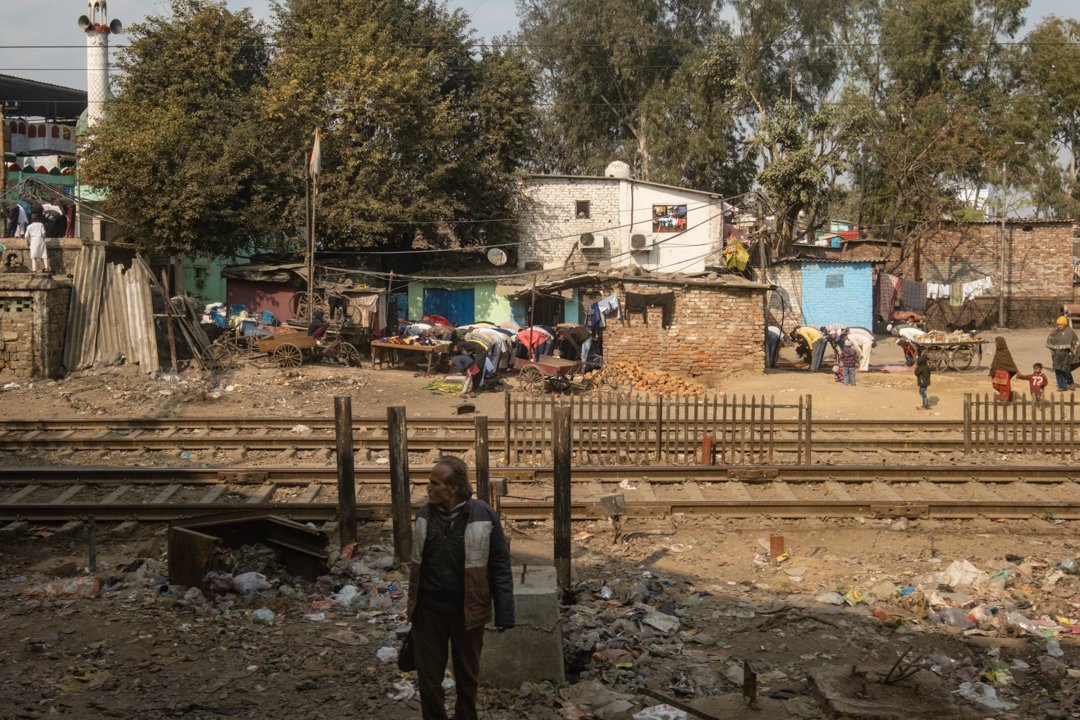
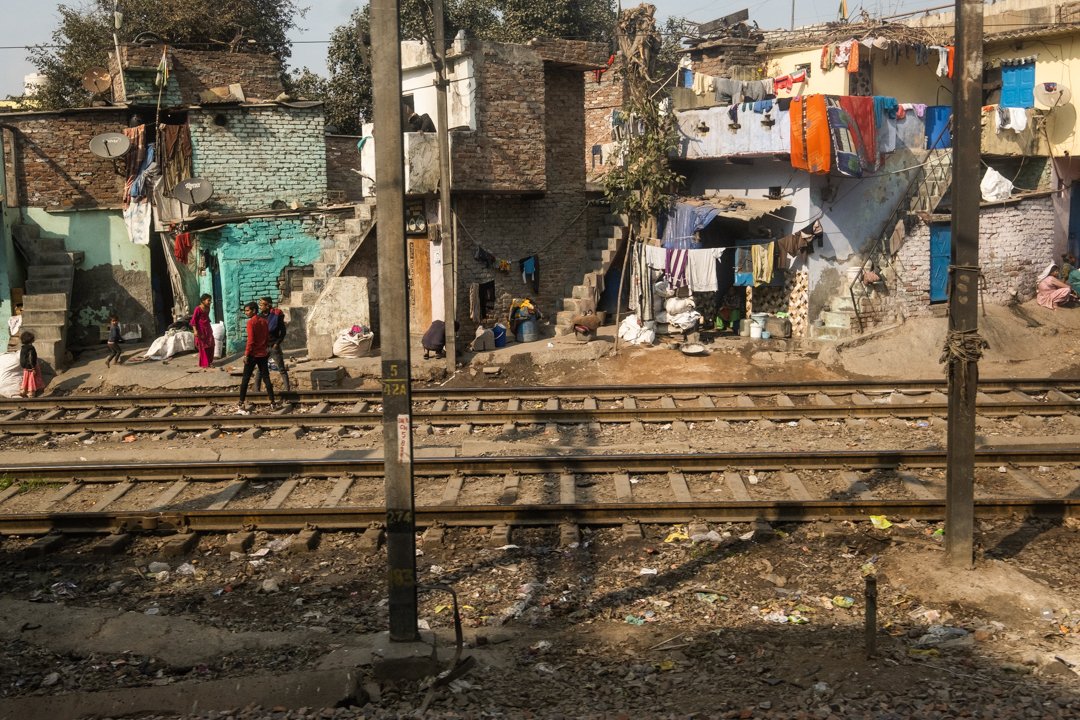
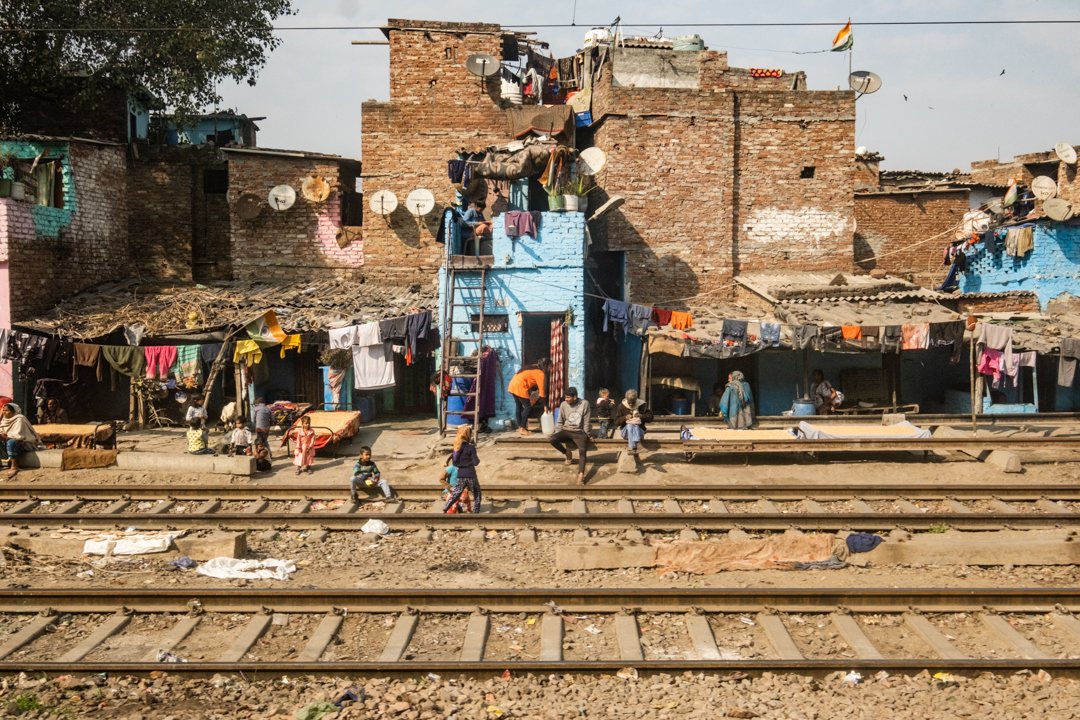
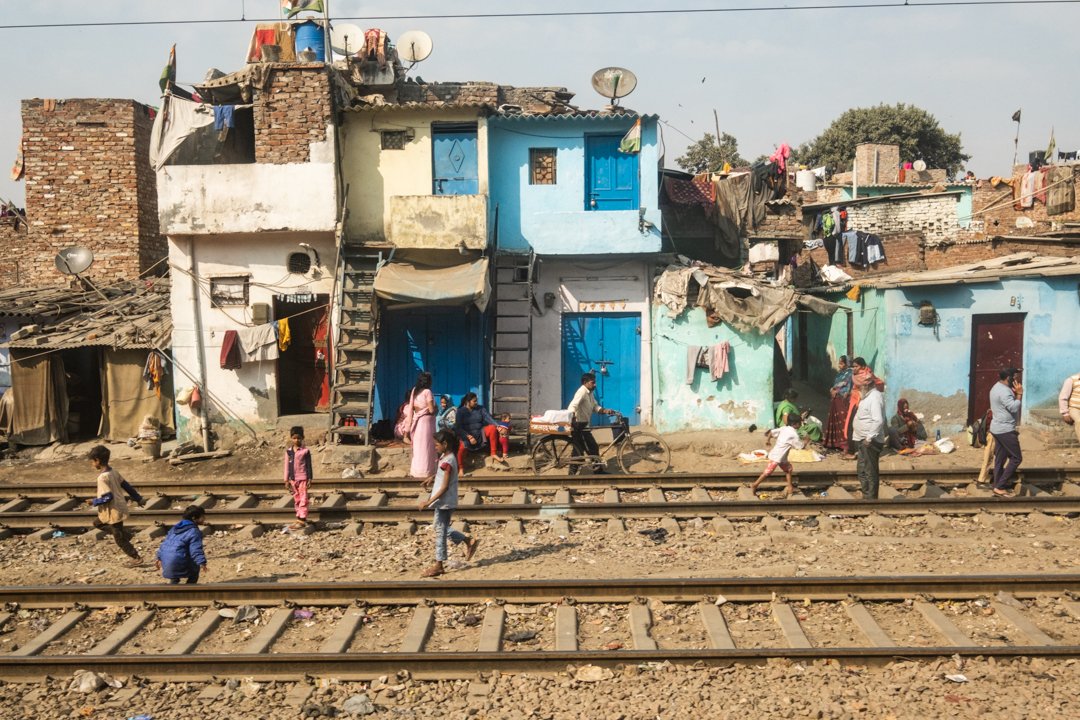
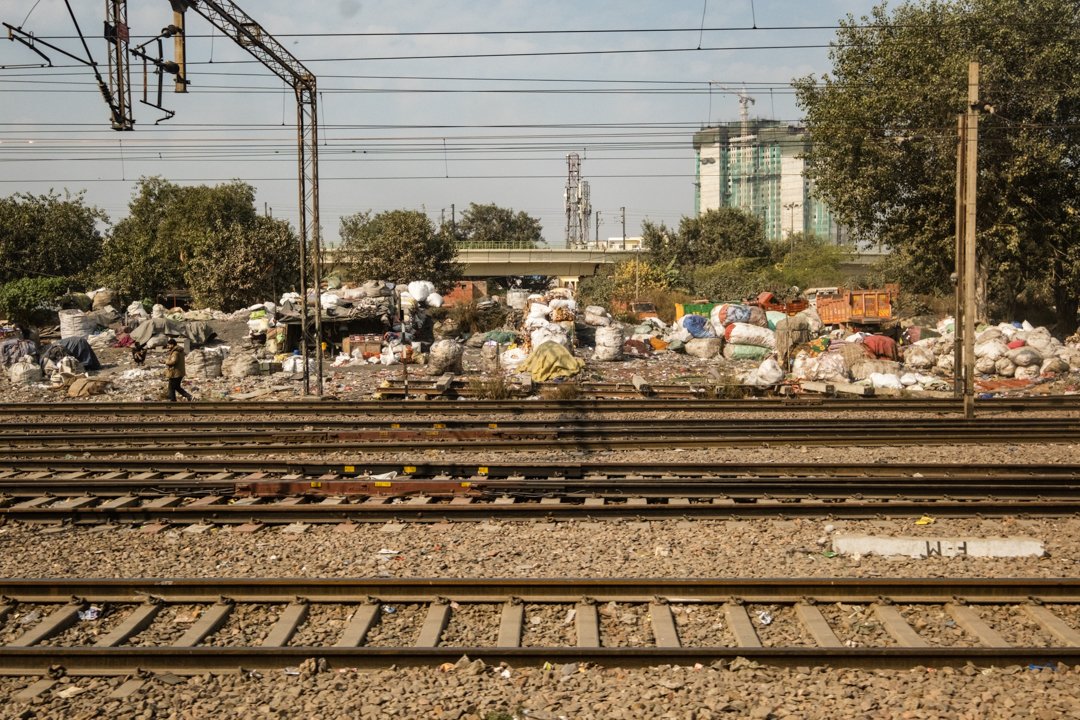
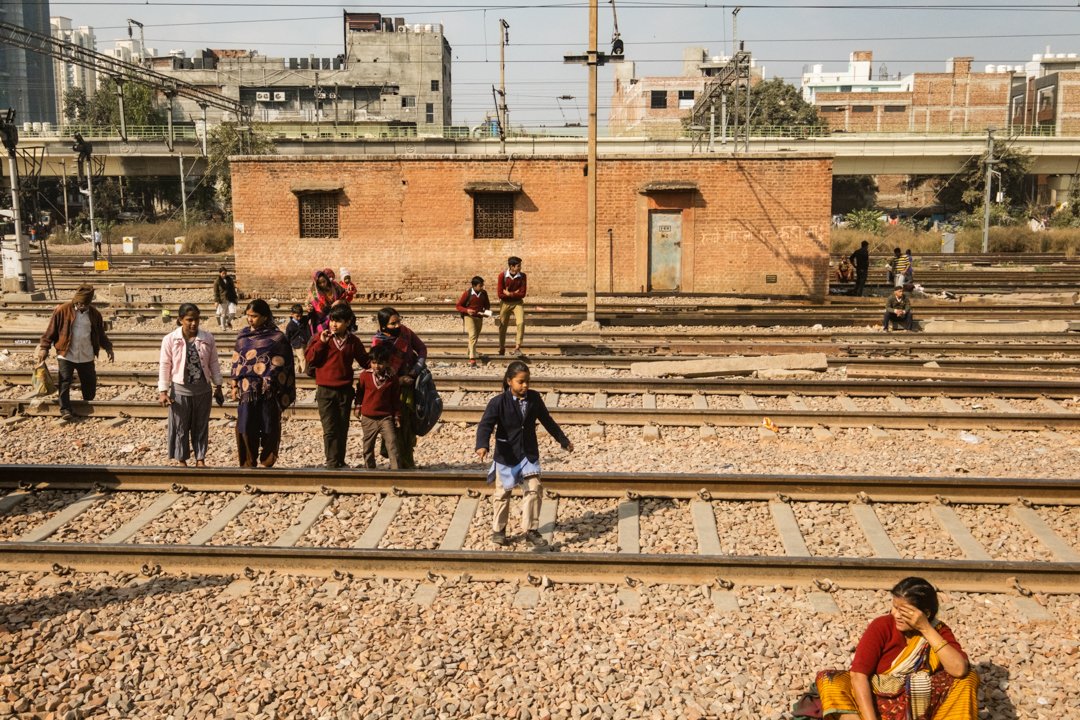
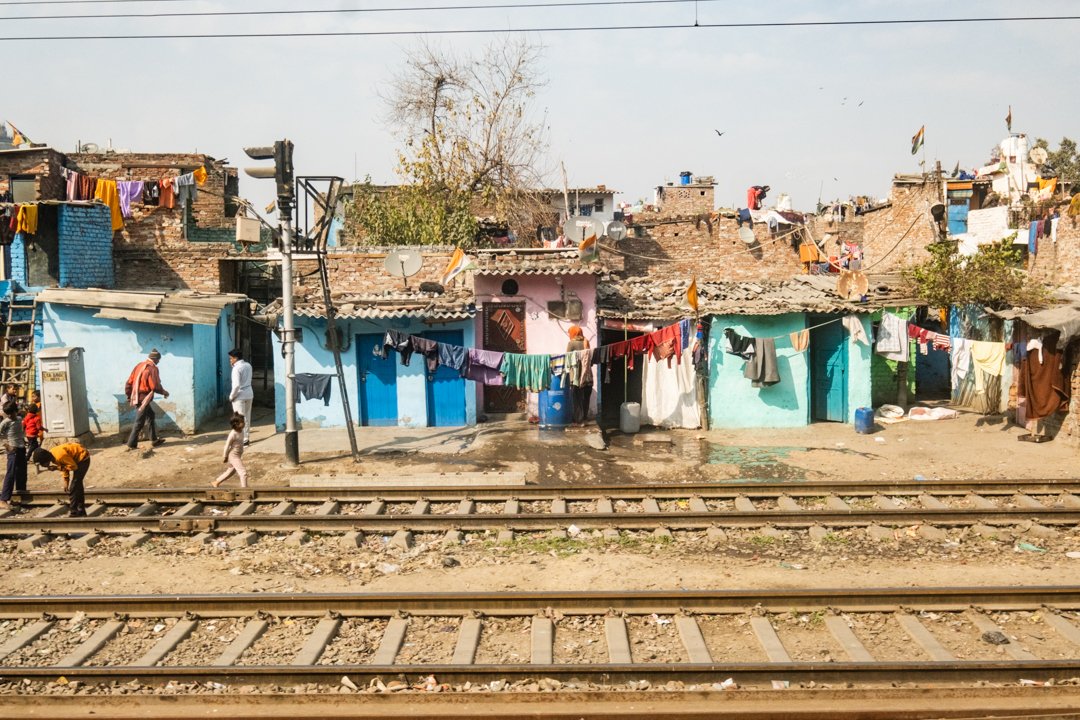

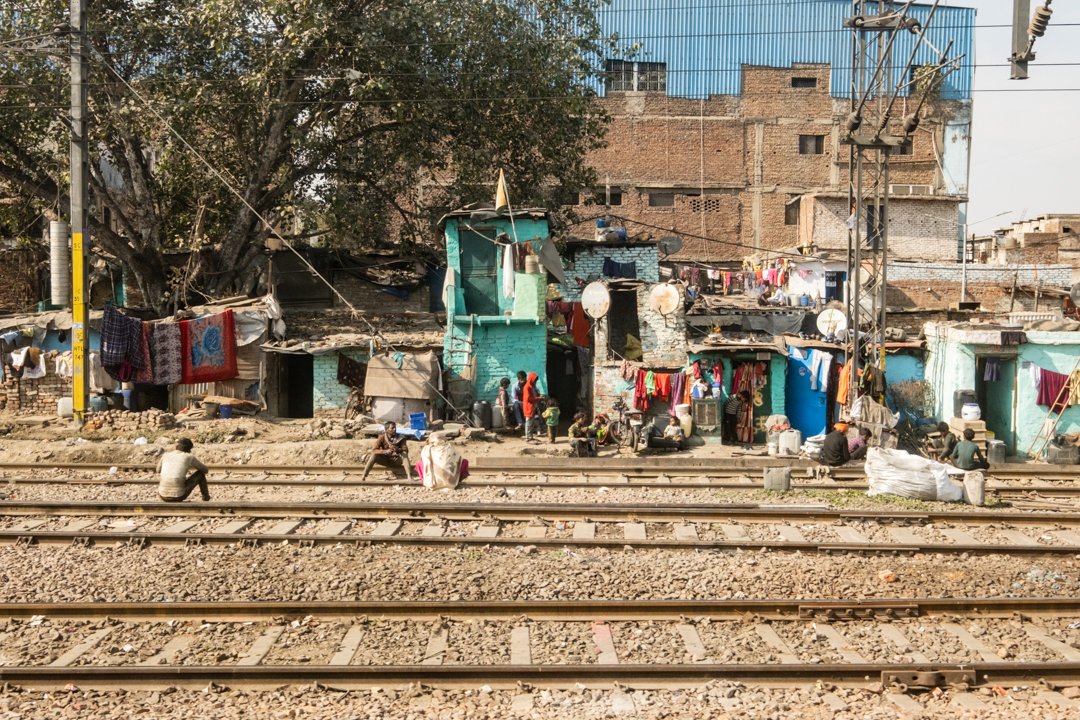
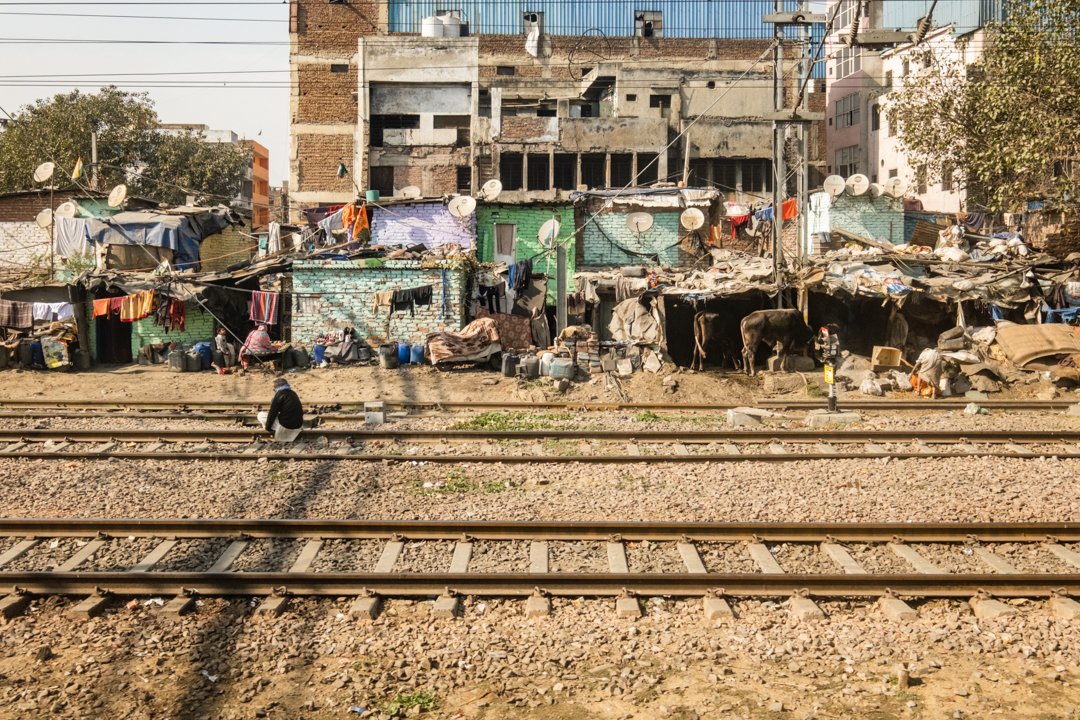
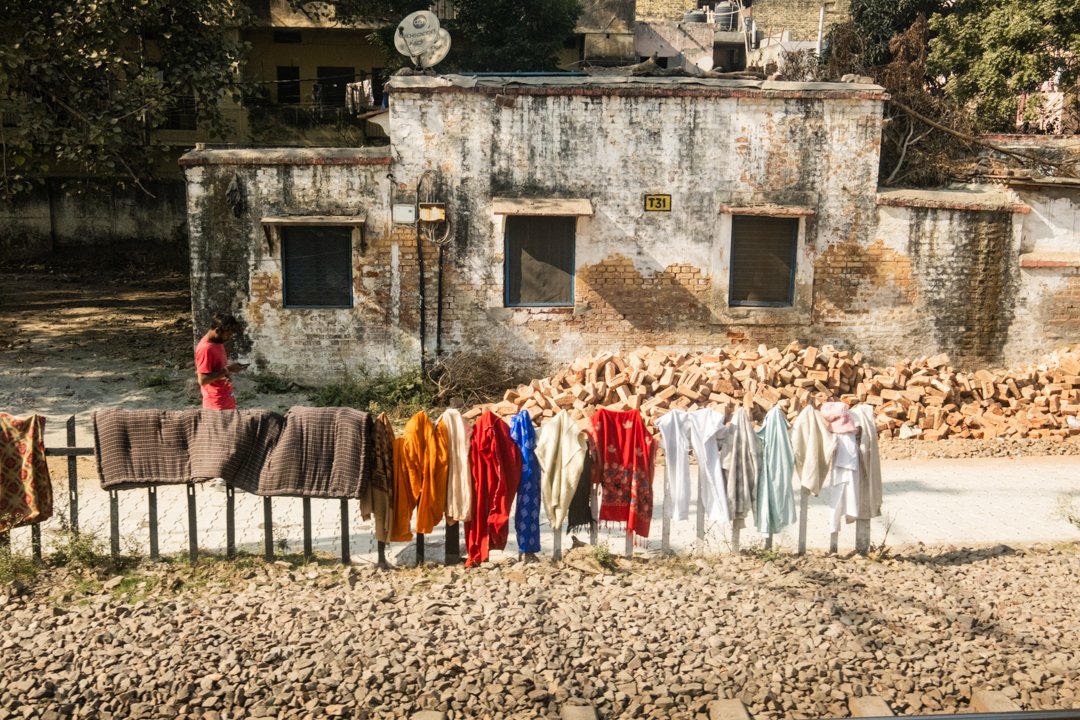
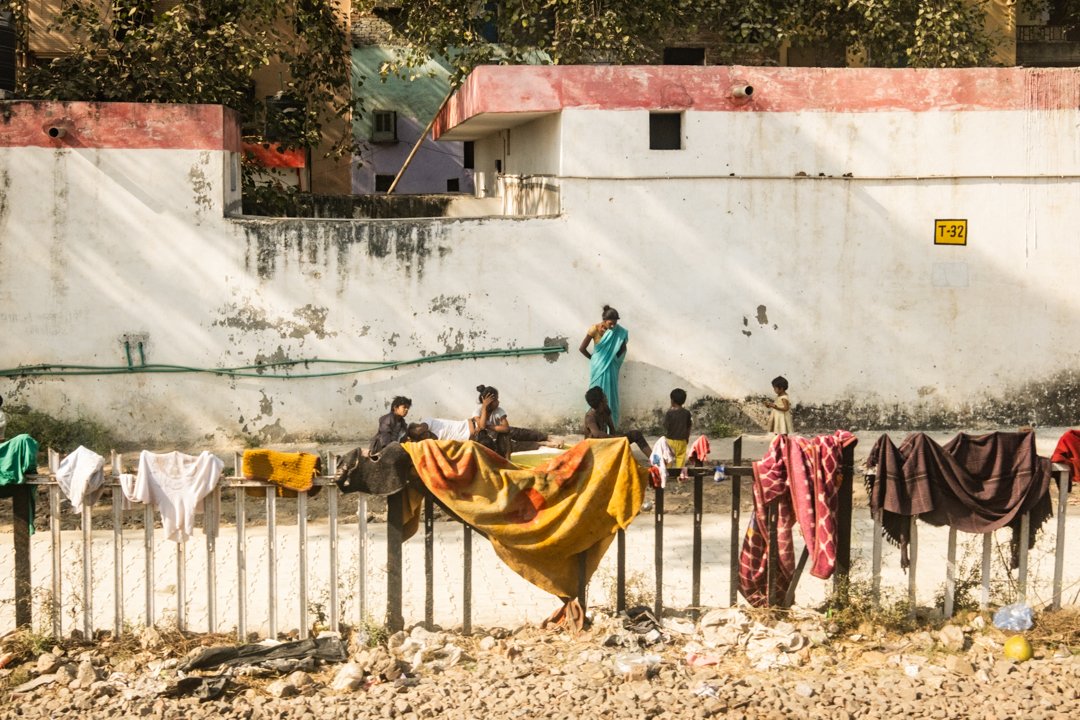
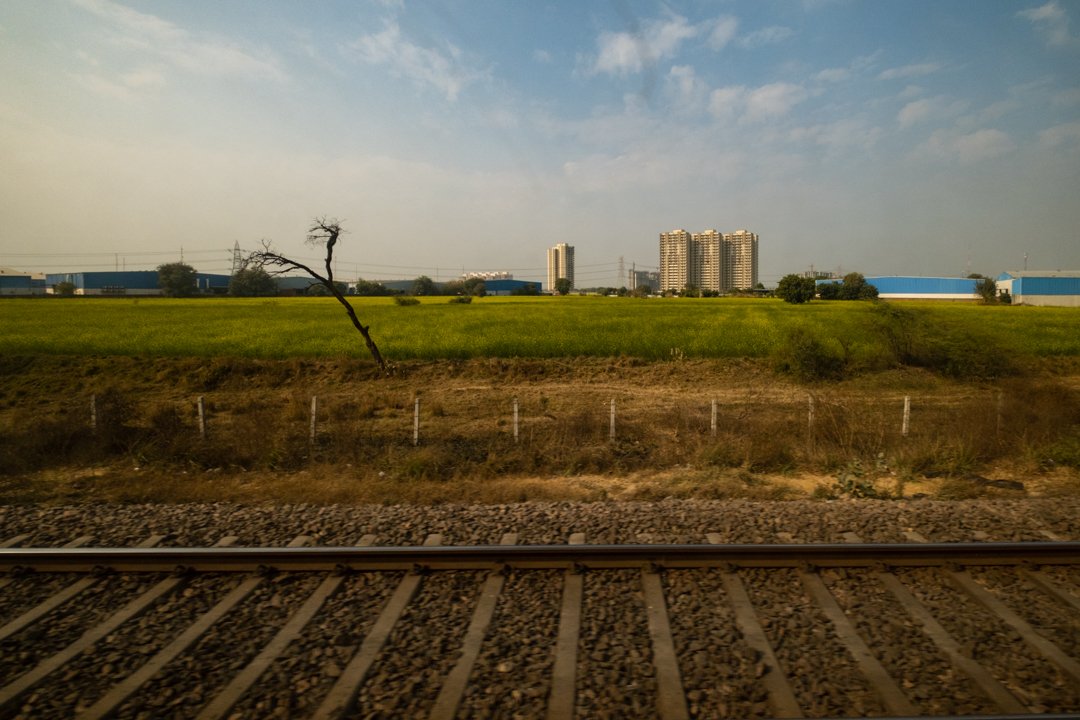
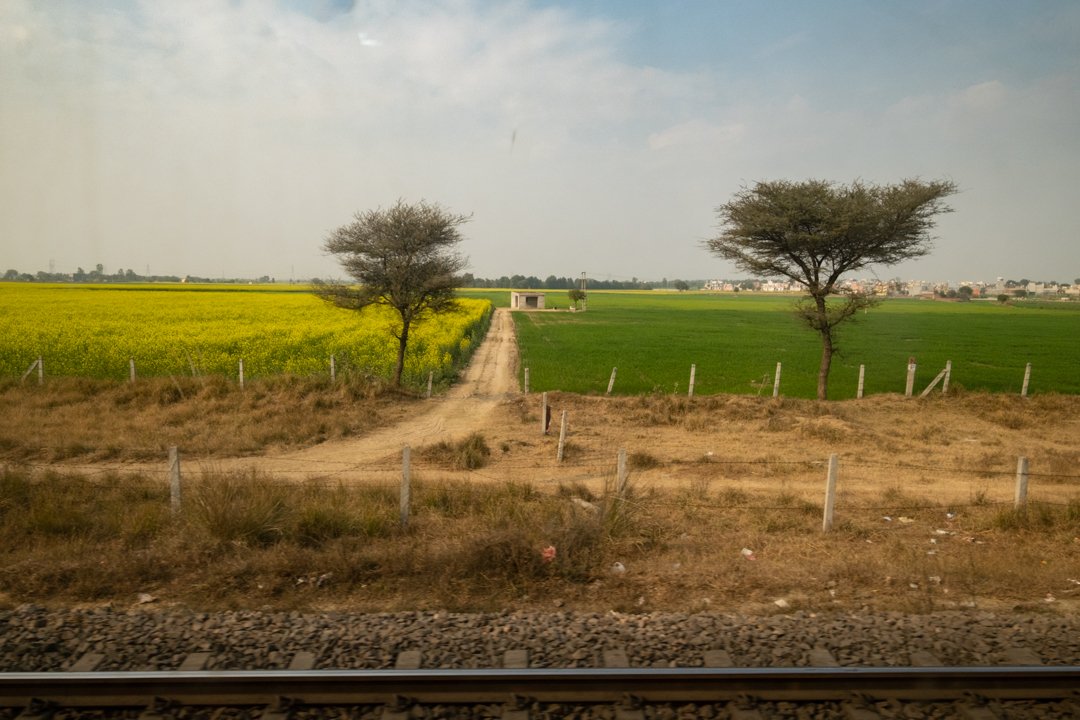
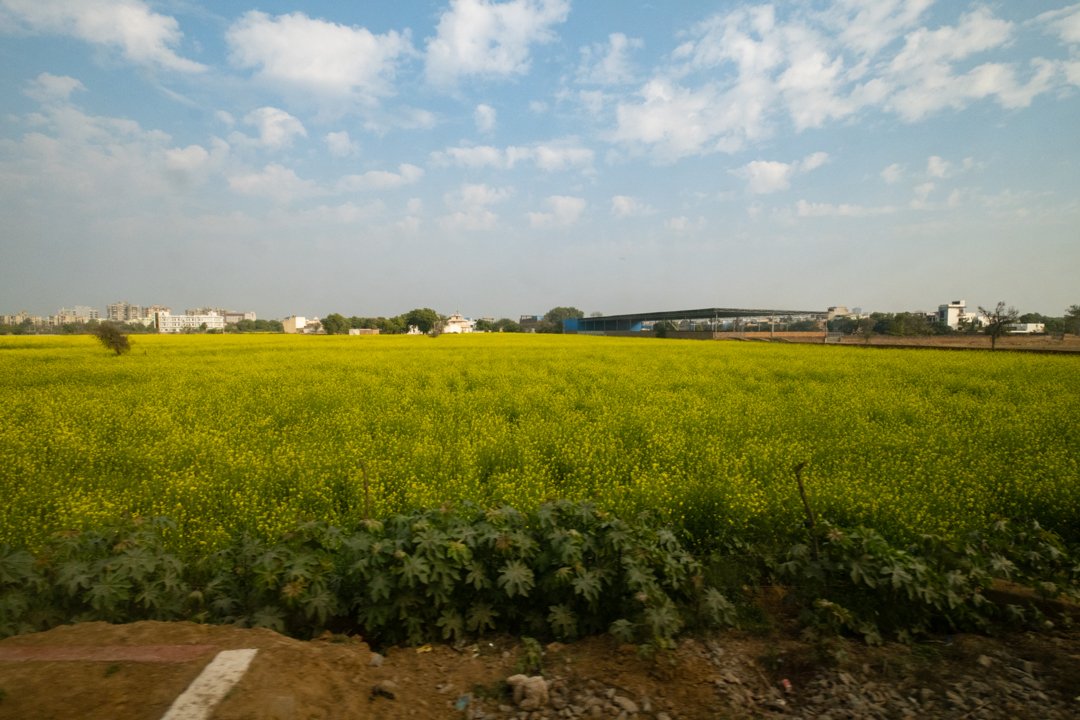
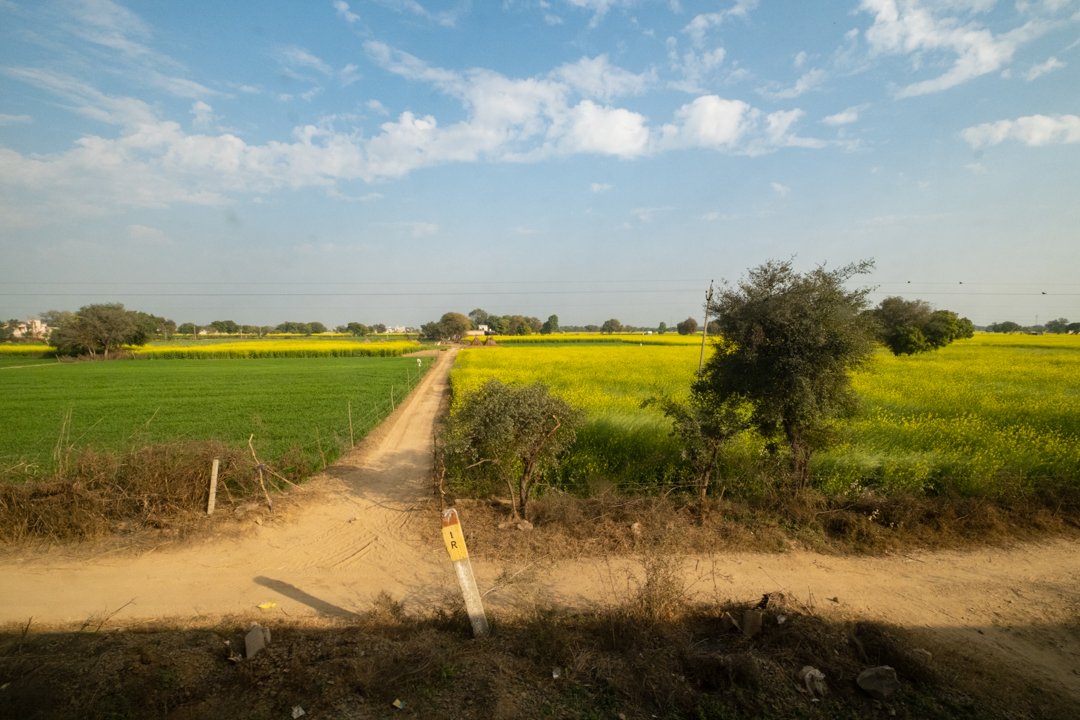

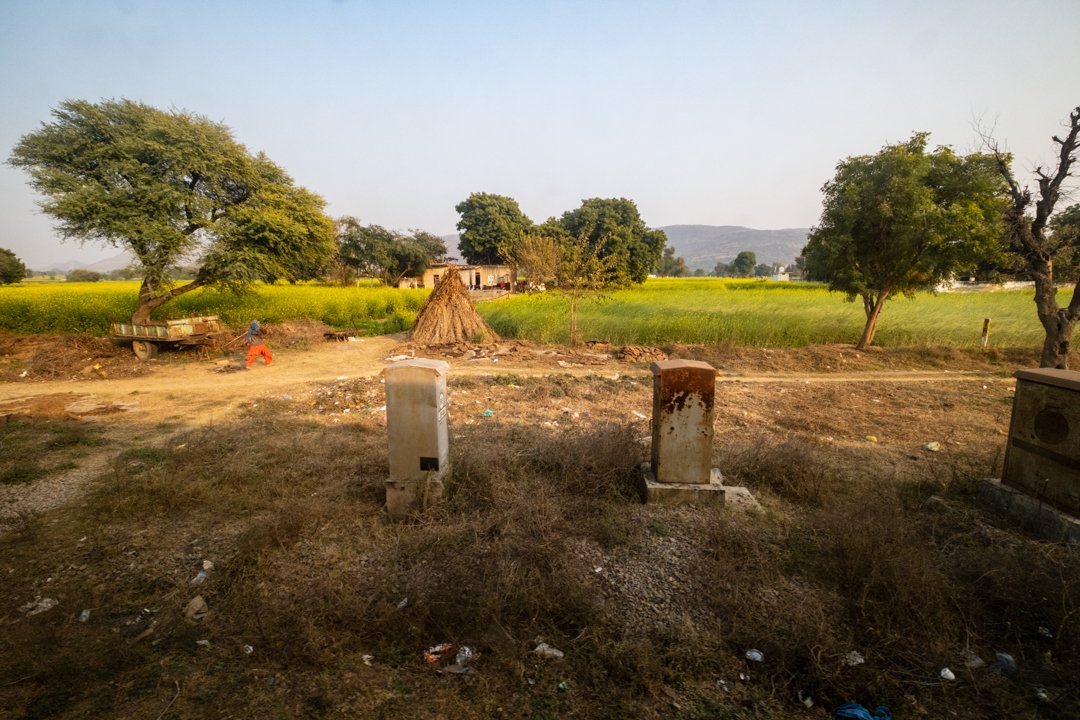
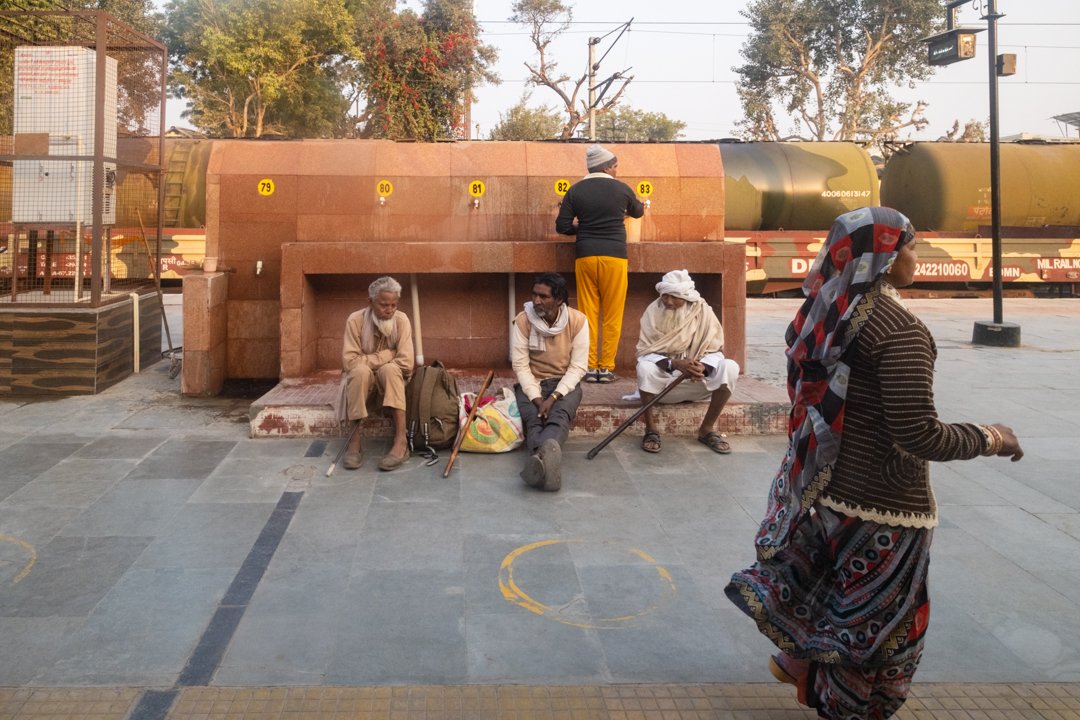
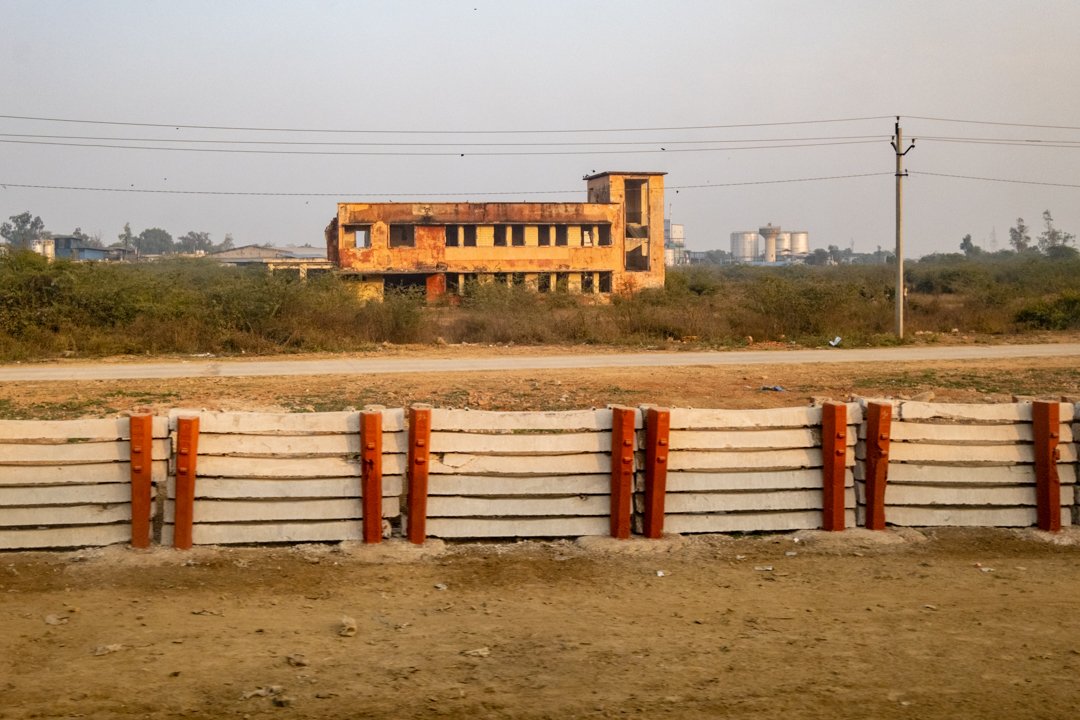
Do Not Spit Here and There - Lodhi Garden sign. New Delhi.
Two things I’m particularly drawn to in India are tuk-tuks and signage. I do love a tuk-tuk drive, except that is when you have a young hot-headed road racer with a turbo charged tuk-tuk hurtling across the Delhi roads. One white knuckle ride is probably enough. We soon realised that an older driver is a wiser driver and a lot slower. This gentleman seemed quite bemused that we adopted him as Mr Tuk-Tuk. He didn’t know the way to many places, but that was unimportant.
A visit to the beautiful Lodhi Gardens proved to be both relaxing and very informative.
Finally we found the Indo-Islamic style tombs and the garden. Apart from history and beauty, Lodhi Garden is a fitness hotspot.
I’m not surprised that everyone, including the dogs, needed a rest. This really is a bit of an oasis in an otherwise noisy, crowded, dusty city.
A walk round a lovely lake and a bit more reading to finish off.
Lodhi Estate Security
No shop yet, but a very sparkly new sign. Luckily our local shops have everything we need.
